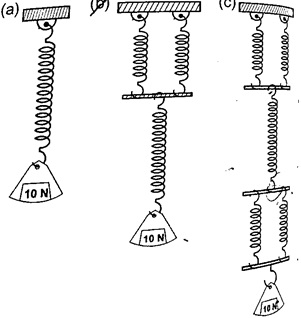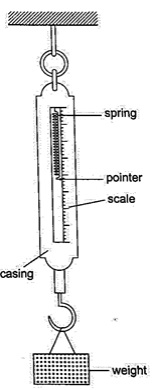Hooke's Law: Introduction
- Hooke's law states that the extension of a spring is proportional to the applied force, provided that the force is not large enough to deform the spring permanently.- Mathematically expressed as Force α extension.
Spring Constant
- Since Force α extension then Force / Extension = constant (k).- The constant of proportionality (k) is called the spring constant.
F / e = k or Force (N) = k e.
- The spring constant is a measure of the stiffness of a spring. The greater the constant the stiffer the spring.
- The spring constant varies with the following;
- Material – identical springs mad of different materials will have different constants i.e. steel and copper.
- Diameter – the stiffness decreases with the increase in diameter.
- Thickness of the wire – a spring made of a thicker wire is stiffer than the one made of thin wire of the same material.
- Length of spring – a short spring is stiffer than a longer one.
- Number of turns per unit length – a spring with higher number of turns per unit length is less stiff than the one with fewer turns per unit length.
Practice Example 1
1. If the springs shown below are similar and the constant of proportionality (k) is 100 Nm-1, determine total extension in each arrangement.

Solution
k = 100 Nm-1extension = force / k = 10 ÷ 100 = 0.1 m = 10 cm. Extension of the lower spring = 10 cm, extension of the two parallel springs = 5 cm.
Total extension = 10 + 5 = 15 cm. Extension of the two lower springs = 5 cm
Middle spring extend by = 10 cm
Upper two springs extend by = 5 cm
Total extension = 5 + 10 + 5 = 20 cm.



